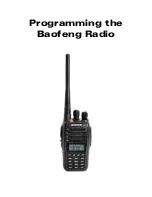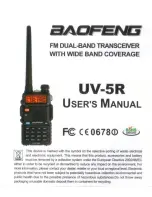
71
Glossary & Abbreviations
Quinhydrone
(C
6
H
4
O
2
. C
6
H
4
(OH)
2
)—
green, water-soluble powder. Quinhydrone is
used to calibrate redox sensors. The quinhydrone's redox potential is dependent on the
pH of the solution.
Reading
—The indication shown by an instrument.
Redox potential = Oxidation-reduction potential (or ORP) = Eh
—Voltage measured at
an inert electrode immersed in a reversible oxidation-reduction system; measurement of
the state of oxidation of the system. The redox potential measures the tendency of
electrons to "flow" either toward or away from a noble metal electrode. A substance gains
electrons in a reduction reaction and loses electrons in an oxidation reaction. ORP varies
from substance to substance, and oxidation-reduction reactions occur simultaneously,
hence the determination of the "potential" rather than of a discrete or qualitative value.
Oxidation and reduction are in a constant state of flux, continuously seeking equilibrium.
Applications for ORP measurement include, but are not limited to, the following:
monitoring oxidation of cyanide and chromate wastes (e.g. metal plating), bleaching pulp
(e.g. paper manufacturing), manufacture of bleach (e.g. monitoring chlorination), water
pollution (e.g. acid mine drainage) and monitoring ozone treatment (e.g. water
disinfection). ORP data has been used to understand more about how substances in
sediments affect the water quality at the bottom of lakes, reservoirs, and ponds.
Reduction
—A reaction that increases the electron content of a substance.
Reference electrode
—A nonpolarizable electrode that generates highly reproducible
potentials; used for pH, ORP, and ammonium measurements and polarographic analyses
(e.g. silver-silver chloride electrode).
Resistivity
—Resistivity is the electrical resistance offered by a material to the flow of
current, times the cross-sectional area of current flow and per unit length of current path. It
is the reciprocal of conductivity and is also known as electrical resistivity and specific
resistance. Resistance declines as ion content increases.
Response time
— The time required for a system to react, by a prescribed amount, to a
step change in some variable. The extent of the response must be stated, as in "to 95% of
total change" or "to within 0.1 mg /l of the final reading" (example for D.O.).
Salinity
—Salinity is the measure of the total quantity of dissolved salts in water. Salinity
refers to the ionic strength of natural waters. Salinity and salt concentration are the only
terms that can be used when referring to the relative concentration of certain salts in bays,
estuaries, and oceans.
SDI-12
—SDI-12 is a standard used to interface data recorders with microprocessor-based
sensors. SDI-12 stands for serial-digital interface at 1200 baud. SDI- 12 is intended for
applications with the following requirements: battery-powered operation with minimal
current drain, low system cost, use of a single data recorder with multiple sensors on one
cable, and up to 200 feet of cable between a sensor and a data recorder.
Sensor
—The generic name for a device that senses either the absolute value or a
change in a physical quantity such as temperature, pressure, flow rate, or pH, and
converts that change into a useful input signal for an information-gathering system.
Service loop
—A loop in a wire or cable to reduce the load on the wire or cable.
Slope
—Slope is the operation applied to the system's response once the zero has been
set. Slope is a measure of the sensitivity of a sensor. Slope scales the sensor's output to
the correct units. (Also see: Zero)
Summary of Contents for Hydrolab DS5
Page 2: ......
Page 8: ......
Page 14: ......
Page 17: ...17 Installation Figure 5 Assembly Options...
Page 18: ......
Page 34: ...34 Deployment Figure 12 Open Water Deployment...
Page 52: ......
Page 68: ......




































